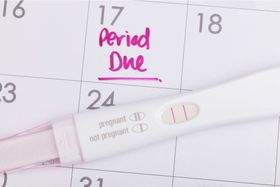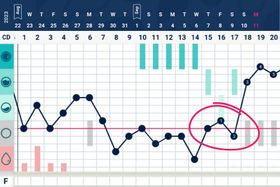Fertility is More Than Conception
Updated July 2, 2025

What is the first thing that comes to mind when you hear the word “fertility?” For most people, it’s the image of conception, pregnancy and most likely babies.
Contrary to popular belief, charting your cycle with fertility awareness is incredibly versatile, and the experience of our cycles goes beyond just getting pregnant.
Fertility awareness is useful for all reproductive life stages, including getting pregnant, avoiding pregnancy and monitoring our health. In my last blog post, I talked about how you can use fertility charting to advocate for your health in your conception journey. It makes sense: chart ovulation so that you can conceive.
But the benefits of fertility charting don’t just stop at conception.
Fertility Charting can Help you Avoid Pregnancy
With the fertility awareness method, we use the same information to get pregnant as we do to avoid pregnancy. The basic premise of fertility awareness for birth control is that you identify when in your cycle pregnancy is possible (also called the fertile window) and avoid unprotected intercourse on those days.
During your fertile window, you can use barrier methods, abstain, use proper withdrawal or have alternative sex. During the rest of your cycle, you can have worry-free unprotected sex. When used correctly, fertility awareness is incredibly effective and doesn’t come with the side effects of hormonal birth control.
Fertility Awareness Gives you Incredible Health Insights
Our two main reproductive hormones, estrogen and progesterone, play an important role in our menstrual cycle. They are also important for so much more than reproduction.
Our hormones are chemical messengers transported through our blood stream, and they interact with our major organs, including our brain!
Estrogen facilitates the building of the uterine lining and leads to the development and eventual release of the egg in the first half of the cycle. Associated with peak fertility, estrogen preps us to find a potential mate and conceive. Estrogen boosts our feel-good hormone Serotonin, and stimulates the creation of cervical mucus that is excellent at keeping sperm alive for a long time.
Progesterone is the dominant hormone in the second half of the cycle. It prepares the body for a potential pregnancy and stimulates feelings of calm. Progesterone promotes good sleep and maintains our brain and bone cells.
When we're regularly cycling, we are gaining all the benefits of these naturally occurring hormones. Monitoring the health of your cycle helps you assess whether your hormones are in balance.
Our overall health will be represented in our cycle, and our cycle health will be represented in our overall health. We cannot separate the two.
What to Track
When we chart our cycles, we monitor our overall health and hormone balance as a source of incredible insights.
A great way to tap into the connection our cycles have with our overall health is to start tracking it! Track your overall health and well-being, and monitor the connection that it has with your cycle.
Here are some things you can start with:
- Food sensitivities
- Daily mood
- Physical activity
- Libido
- Caffeine or alcohol intake
- Creativity and motivation
Paying attention to your cycles means that you can monitor your cycle health and seek professional support if needed. Things like ovulation, menstrual flow, cervical mucus and cycle length are all signs of health. If any of your cycle parameters are consistently outside of the normal range, you may want to seek support from a qualified practitioner who specializes in women’s health.
Read more about charting for health.
Get more facts about fertility charting at Facts, Fertility Appreciation, Collaborative to Teach the Science.






